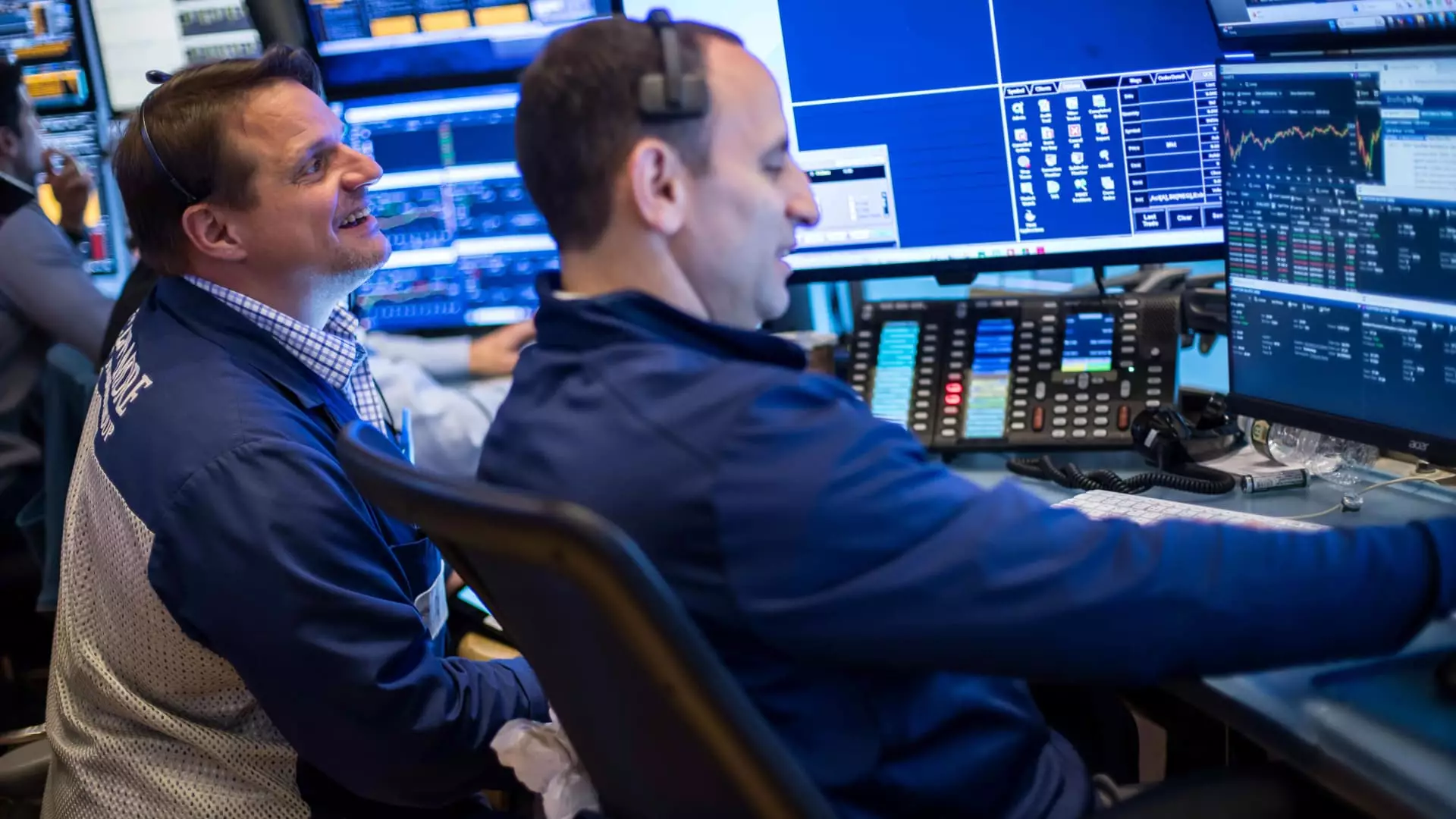The recent surge in U.S. stock markets has been nothing short of staggering, as evidenced by the Dow Jones Industrial Average soaring 443.13 points, or 1.05%, to close at 42,762.87. This rise, fueled by the latest nonfarm payrolls data which exceeded expectations, may offer a temporary reprieve from growing concerns about an impending economic slowdown. This elation in the financial markets begs the question: are investors celebrating significant progress or merely masking underlying issues that threaten to devour any optimism?
The Bureau of Labor Statistics reported a climb in payroll numbers to 139,000 for May, surpassing forecasts of 125,000. But let’s not lose sight of the details—this figure represents a troubling decline from the downwardly revised tally of 147,000 in April. The unemployment rate remained at 4.2%, but stagnant unemployment figures coupled with slowing growth trends should trigger alarm bells rather than cheers in the corners of Wall Street.
Tech Sector’s Rollercoaster Ride
While Wall Street erupted in celebration, it’s essential to analyze the backdrop of this market manipulation. The normally reliable tech sector, which powered much of this growth, recently teetered on the verge of calamity. Tesla’s climb of more than 3% in response to the positive payroll data followed a tumultuous plunge of 14%. CEO Elon Musk’s social media scuffles with political figures like Donald Trump over matters beyond stock prices seem to highlight a sector distracted by noise rather than steadfast innovation.
It isn’t only Tesla that raised eyebrows; stalwarts like Nvidia, Meta Platforms, and Apple all ended the session higher, yet one wonders if this is a genuine reflection of their health, or merely a balmy day in what could soon become a thunderstorm of realities. Investors may want to remember that the tech sector is often driven by sentiment, which, when manipulated, can lead to treacherous long-term consequences.
Impending Tariff Troubles
In addition to the shocking payroll report, a storm brews on the horizon. The effects of ongoing tariff negotiations, which have yet to be fully realized, pose significant risks that could reverberate throughout the economy. While the stock market’s optimistic tone suggests that fears are abating, observers in the financial jungle should remain cautious. Markets remain hesitant, as analysts indicate that the effects of tariffs may start to show in economic data by summer.
With unemployment claims rising unexpectedly, doubts about the robustness of our economy linger like a dark cloud. The alarming decline in private sector payrolls, reported by ADP at 37,000—well below the expected 110,000—serves as a critical reminder that the labor market may not be as resilient as we’d like to believe.
The Federal Reserve’s Role
As we contemplate the economic landscape, the looming decisions by the Federal Reserve regarding interest rates come into sharp focus. With their next meeting set for June 17-18, the question remains: will they continue to act as a stabilizing force or add to the uncertainty? The Fed’s policies can either nurture our fragile economic recovery or throw it into chaos. Investors must scrutinize these developments closely, as any miscalculated adjustments could plunge the markets back into uncertainty.
A False Sense of Security?
Market euphoria often paints a rosy picture of economic health, but history has shown us time and again that such exuberance can be ephemeral. The excitement surrounding this payroll data could turn out to be a mirage. As the S&P 500 and other major benchmarks posted gains, it is crucial to distinguish between genuine recovery and the optimistic facade masking deeper systemic issues.
In the political and economic confluence we observe today, a nuanced understanding of financial markets transcends mere numbers. It’s about preserving long-term stability in a climate fraught with discontent stemming from tariff negotiations, tech market fluctuations, and uncertain labor statistics. This cycle of blind optimism needs to evolve into conscious awareness before we find ourselves revisiting past mistakes. The financial and political fabric of America requires astute analysis and bold actions, steering us towards not just recovery, but sustainable progress.

